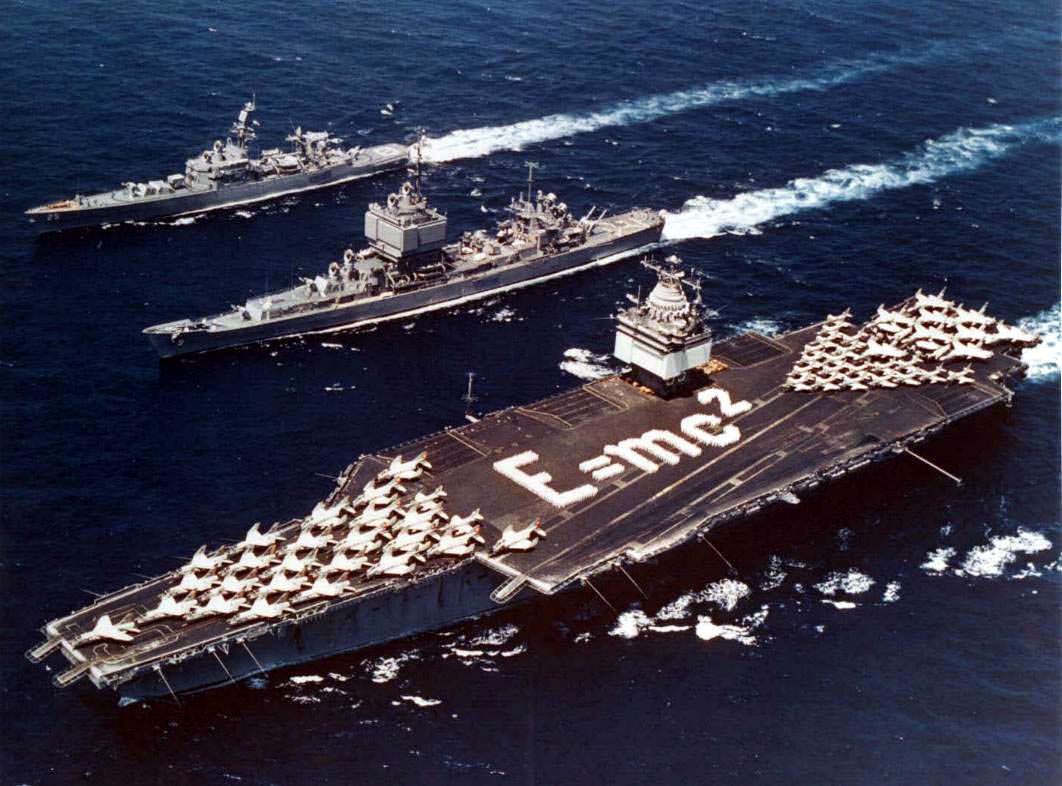[/caption]
Some say that the reason you can’t travel faster than light is that your mass will increase as your speed approaches light speed – so, regardless of how much energy your star drive can generate, you reach a point where no amount of energy can further accelerate your spacecraft because its mass is approaching infinite.
This line of thinking is at best an incomplete description of what’s really going on and is not a particularly effective way of explaining why you can’t move faster than light (even though you really can’t). However, the story does offer useful insight into why mass is equivalent to energy, in accordance with the relationship e=mc2.
Firstly, here’s why the story isn’t complete. Although someone back on Earth might see your spacecraft’s mass increase as you move near light speed – you the pilot aren’t going notice your mass change at all. Within your spacecraft, you would still be able to climb stairs, jump rope – and if you had a set of bathroom scales along for the ride you would still weigh just the same as you did back on Earth (assuming your ship is equipped with the latest in artificial gravity technology that mimics conditions back on Earth’s surface).
The change perceived by an Earth observer is just relativistic mass. If you hit the brakes and returned to a more conventional velocity, all the relativistic mass would go away and an Earth observer would just see you retaining with same proper (or rest) mass that the spacecraft and you had before you left Earth.
The Earth observer would be more correct to consider your situation in terms of momentum energy, which is a product of your mass and your speed. So as you pump more energy in to your star drive system, someone on Earth really sees your momentum increase – but interprets it as a mass increase, since your speed doesn’t seem to increase much at all once it is up around 99% of the speed of light. Then when you slow down again, although you might seem to be losing mass you are really offloading energy – perhaps by converting your kinetic energy of motion into heat (assuming your spacecraft is equipped with the latest in relativistic braking technology).

From the perspective of the Earth-based observer, you can formulate that the relativistic mass gain observed when travelling near light speed is the sum of the spacecraft’s rest mass/energy plus the kinetic energy of its motion – all divided by c2. From that you can (stepping around some moderately complex math) derive that e=mc2. This is a useful finding, but it has little to do with why the spacecraft’s speed cannot exceed light speed.
The phenomenon of relativistic mass follows a similar, though inverse, asymptotic relationship to your speed. So as you approach light speed, your relativistic time approaches zero (clocks slow), your relativistic spatial dimensions approach zero (lengths contract) – but your relativistic mass grows towards infinite.
But as we’ve covered already, on the spacecraft you do not experience your spacecraft gaining mass (nor does it seem to shrink, nor its clocks slow down). So you must interpret your increase in momentum energy as a genuine speed increase – at least with respect to a new understanding you have developed about speed.
For you, the pilot, when you approach light speed and keep pumping more energy into your drive system, what you find is that you keep reaching your destination faster – not so much because you are moving faster, but because the time you estimated it would take you to cross the distance from point A to Point B becomes perceivably much less, indeed the distance between point A to Point B also becomes perceivably much less. So you never break light speed because the distance over time parameters of your speed keep changing in a way that ensures that you can’t.
In any case, consideration of relativistic mass is probably the best way to derive the relationship e=mc2 since the relativistic mass is a direct result of the kinetic energy of motion. The relationship does not easily fall out of consideration of (say) a nuclear explosion – since much of the energy of the blast derives from the release of the binding energy which holds a heavy atom together. A nuclear blast is more about energy transformation than about matter converting to energy, although at a system level it still represents genuine mass to energy conversion.
Similarly you might consider that your cup of coffee is more massive when it’s hot – and gets measurably less massive when it cools down. Matter, in terms of protons, neutrons, electrons …and coffee, is largely conserved throughout this process. But, for a while, the heat energy really does add to the mass of the system – although since it’s a mass of m=e/c2, it is a very tiny amount of mass.

